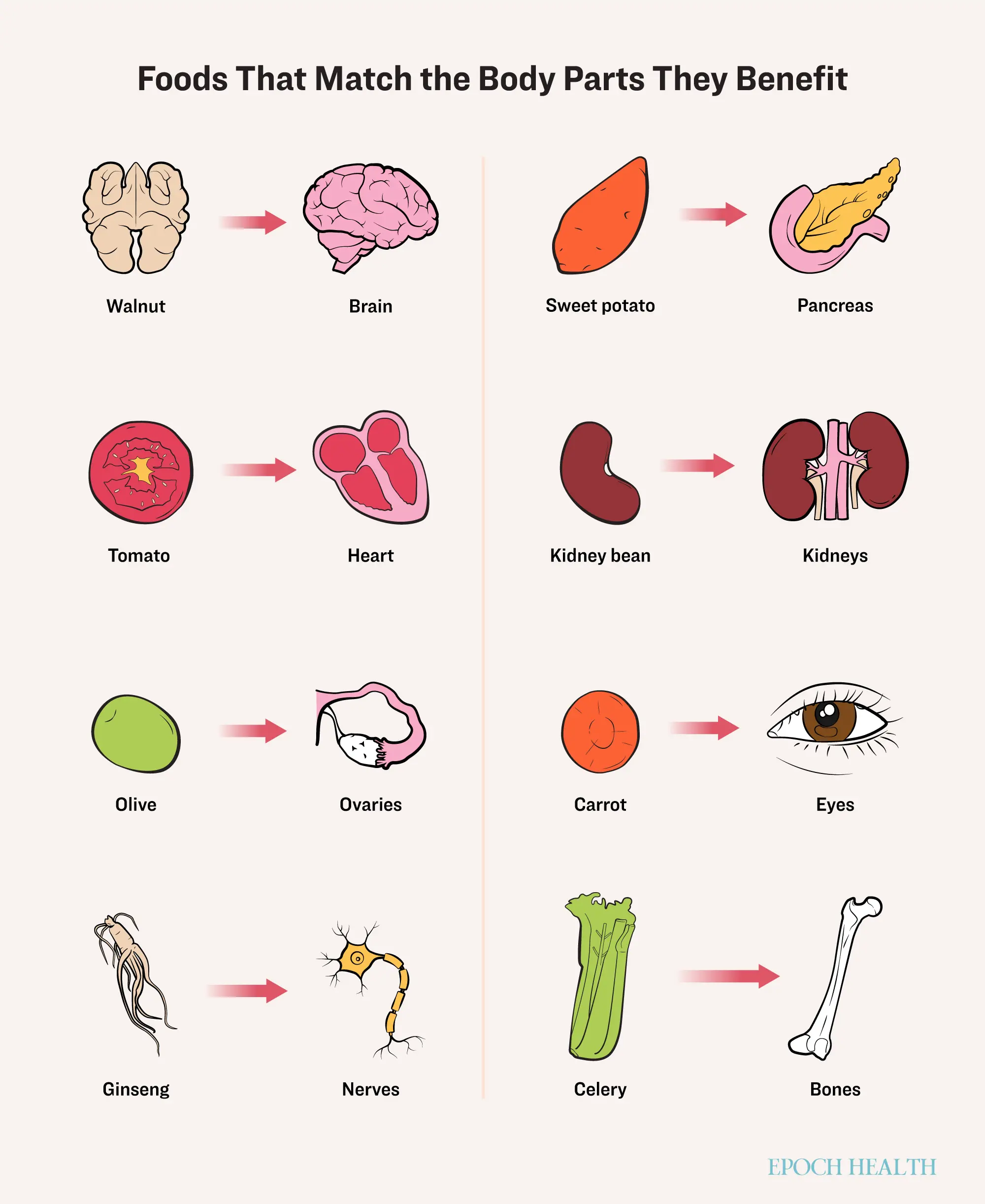For centuries, people turned to nature for remedies to ease suffering, often observing how a plant’s appearance provided clues to its healing properties. Ancient physicians believed these visual cues were part of a divine design, guiding them toward cures.
By the medieval period, the idea that a plant’s resemblance to a body part revealed its medicinal use became widely accepted. This belief extended across cultures, appearing in Native American herbalism, Ayurveda, traditional Chinese medicine, and African and Greek healing traditions.
Understanding this synchronicity offers insight into the idea of “food as medicine” and how diet impacts health. Below are examples of foods resembling the body parts they benefit:
Avocado (Uterus): Avocados resemble the uterus and support reproductive health with monounsaturated fats and folate, aiding hormone production and reducing cervical cancer risks.
Carrot (Eyes): Sliced carrots resemble an iris and pupil. They’re rich in beta-carotene and lutein, which protect against vision loss, age-related macular degeneration, and blindness.
Celery (Bones): Celery stalks resemble bones and contain flavonoids like apigenin, which support bone health and prevent osteoporosis.
Ginger (Stomach): Ginger’s shape hints at its digestive benefits. Used for centuries to combat nausea, its compounds help relieve morning sickness, motion sickness, and chemotherapy side effects.
Ginseng (Nerves): Ginseng roots resemble the nervous system, and its active compounds boost memory, neuron survival, and brain cell growth.
Kidney Bean (Kidney): Shaped like kidneys, these beans lower cholesterol and improve liver and kidney function through antioxidants like glutathione.
Olive (Ovaries): Resembling ovaries, olives and olive oil lower ovarian cancer risks. Their healthy fats also fight breast cancer and osteoporosis in postmenopausal women.
Sweet Potato (Pancreas): Shaped like a pancreas, sweet potatoes stabilize blood sugar with nutrients like potassium and beta-carotene. Animal studies show they ease the pancreas’s workload.
Tomato (Heart): Cut open, tomatoes mirror a heart’s four chambers. Rich in lycopene, they reduce cardiovascular disease risk, especially when paired with healthy fats like olive oil.
Walnut (Brain): Walnuts resemble brains and improve cognitive function, memory, and attention, as shown in studies like a six-month trial in The Lancet. Their antioxidants combat age-related cognitive decline and reduce Alzheimer’s risk.










